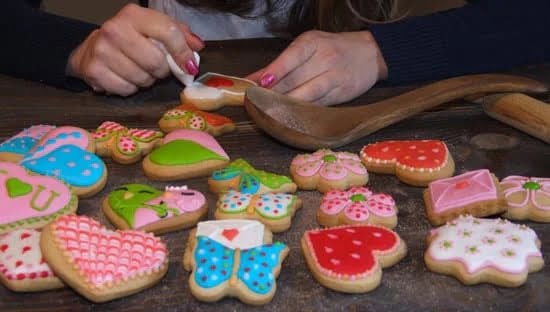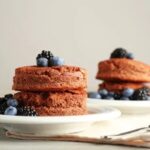Decorating cakes is not only a delicious endeavor but also an opportunity to showcase your creativity and skill. And when it comes to cake decorations, there’s nothing quite like homemade dough. Making your own dough for cake decorations offers endless possibilities for customization, allowing you to bring your unique vision to life.
One of the greatest benefits of creating your own dough is its versatility. Homemade dough can be molded, shaped, and formed into intricate designs that perfectly complement any cake theme or style. Whether you’re aiming for elegant and sophisticated decorations or whimsical and playful accents, homemade dough provides the perfect canvas for your imagination to run wild.
In addition to flexibility, making your own dough gives you complete control over the ingredients you use. Unlike store-bought options that often come with preservatives or artificial additives, homemade dough allows you to create a natural and flavorful base for your cake decorations. You can experiment with different flavors by adding extracts such as vanilla, almond, or citrus zest directly into the dough, elevating both the taste and visual appeal of your creations.
So get ready to dive into the world of homemade cake decorations. In this article, we will guide you through everything you need to know about making dough for cake decorations. From understanding different types of dough to step-by-step instructions on preparing a basic recipe from scratch, we’ve got you covered. Get ready to unleash your creativity and transform your cakes into works of art with the magic of homemade dough.
Understanding the Different Types of Dough for Cake Decorations
When it comes to cake decorations, dough plays a crucial role in bringing your artistic vision to life. Understanding the different types of dough commonly used for cake decorations is essential for achieving the desired results. Here, we will explore the main types of dough and highlight their unique characteristics and uses.
The most well-known type of dough used for cake decorations is fondant. Fondant is a smooth, pliable dough made from sugar, water, and other ingredients. It can be rolled out and draped over cakes or molded into various shapes. Fondant is widely used for creating elegant and sophisticated designs due to its smooth finish.
Another popular type of dough is gum paste. Gum paste is similar to fondant but contains an added ingredient – gum tragacanth or tylose powder – which gives it more elasticity and strength. This makes gum paste ideal for creating intricate flowers, figurines, and other detailed decorations that require a delicate touch.
Modeling chocolate is yet another type of dough used in cake decorations. Made primarily from chocolate and corn syrup or glucose, modeling chocolate has a firm yet pliable texture that’s perfect for sculpting three-dimensional designs like animals or objects. Modeling chocolate can also be colored using gel-based food coloring.
Other types of dough commonly used for cake decorations include marzipan (a sweet almond-based dough), pastillage (a rigid sugar-based dough), and royal icing (a thick, hardening icing that can be piped onto cakes). Each type offers unique properties that cater to specific design needs and preferences.
By understanding the different types of dough available for cake decorations, you can choose the one that best suits your project requirements. Whether you’re aiming for a smooth finish with fondant or intricate details with gum paste or modeling chocolate, having knowledge of these options will help you achieve your desired cake decorating outcome.
Gathering the Ingredients for a Basic Dough Recipe
To successfully make dough for cake decorations, it is important to gather the right ingredients. While specific recipes may vary, there are some basic ingredients that are commonly used in dough making. Here are the essential ingredients needed to make a basic dough recipe for cake decorations:
- Powdered Sugar: Also known as confectioners’ sugar or icing sugar, powdered sugar is a key component in most dough recipes. It helps to create a smooth texture and sweetness in the dough.
- Gelatin: Gelatin is often used to give the dough structure and elasticity. It helps the dough hold its shape and prevents it from cracking or breaking.
- Water: Water is typically added to improve the consistency of the dough and aid in mixing the other ingredients together smoothly. It is important to use water at room temperature for best results.
- Cornstarch or Tylose Powder: Cornstarch or tylose powder acts as a thickening agent and helps to increase the firmness of the dough. This is particularly useful when working with more delicate designs or in warmer climates where the dough may become too soft.
- Flavorings: Vanilla extract, almond extract, or other flavored extracts can be added to enhance the taste of the dough. These flavorings provide a subtle yet delicious touch to your creations.
- Food Coloring: Food coloring or edible pigments can be used to add vibrant hues and bring life to your dough decorations. These coloring agents should be gel-based for best results and prevent altering the consistency of the dough.
In addition to these key ingredients, it’s also important to have specialized tools such as measuring cups and spoons, mixing bowls, a stand mixer or hand mixer, spatulas, rolling pins, cookie cutters, and parchment paper on hand when preparing your basic dough recipe.
When gathering these ingredients, it’s always helpful to plan ahead and ensure that you have everything you need before starting your dough-making process. Some specialty ingredients or tools may be found in baking supply stores, craft stores, or online retailers that cater to cake decorating enthusiasts. By having all the necessary ingredients and tools ready, you can start on the right foot and create beautiful dough decorations for your cakes.
Step-by-Step Instructions
Gathering the Ingredients
To make a basic dough for cake decorations, you will need a few essential ingredients. These typically include powdered sugar, cornstarch or tapioca starch, gelatin, water, flavoring extracts (such as vanilla or almond), and shortening or butter. You may also need additional ingredients depending on the type of dough you are making. For example, if you are making fondant, you will need marshmallows and confectioners’ sugar.
When gathering your ingredients, it is important to ensure they are of good quality. Look for fresh gelatin packets and choose high-quality flavoring extracts for the best results. Some specialty ingredients may be harder to find at your local grocery store. In such cases, consider looking for them in baking supply stores or online retailers that specialize in cake decorating supplies.
Mixing Techniques and Equipment
Once you have gathered all the necessary ingredients, it is time to prepare your dough. Depending on the recipe you are following, there may be different techniques involved in mixing the ingredients together. It is important to follow these instructions carefully to achieve the desired texture and consistency.
Mixing can be done by hand using a large bowl and a wooden spoon or with the help of a stand mixer fitted with a paddle attachment. Some dough recipes may require kneading on a clean surface lightly dusted with powdered sugar or cornstarch.
When it comes to equipment, having a good quality mixer can make the process easier and more efficient. If you do not already have one, consider investing in a stand mixer for better control over mixing speeds and consistency.
Practical Tips when Making Dough
To ensure success when making dough for cake decorations, keep these practical tips in mind:
- Measure accurately: Use measuring cups and spoons specifically designed for dry ingredients to measure precise amounts.
- Start slow: When adding liquid ingredients to dry ones, start with a small amount and gradually increase while mixing. This will help prevent the dough from becoming too sticky or wet.
- Adjust consistency: If the dough is too dry and crumbly, add a little water or shortening to achieve the desired texture. If it is too sticky, add more powdered sugar or cornstarch.
- Resting time: Many dough recipes require resting time before they are ready to be used. This allows the dough to become more pliable and easier to work with.
By following these step-by-step instructions and keeping these tips in mind, you will be able to make a basic dough for cake decorations that is ready to be transformed into beautiful and delicious creations for any occasion.
Adding Flavor and Color to Your Dough
Enhancing the Flavor
One of the great advantages of making your own dough for cake decorations is the ability to customize the flavor to suit your taste preferences. While plain dough can be delicious on its own, adding a hint of flavor can take your creations to another level. Experimenting with different extracts and flavors can bring a unique twist to your dough decorations. Popular choices include vanilla, almond, or citrus extracts, which can add depth and complexity to the overall taste.
To incorporate these flavors into your dough, simply add a small amount of extract during the mixing process. Start with a teaspoon and gradually increase if needed, being mindful not to overwhelm the other ingredients. Remember that flavors will intensify as the dough rests and develops over time, so consider this when determining how much extract to use.
Creating Vibrant Colors
Colorful dough decorations can make cakes visually striking and captivating. With homemade dough, you have full control over adding vibrant hues that match your theme or desired aesthetic. Food coloring or edible pigments are commonly used for coloring dough.
When it comes to adding color to your homemade dough, there are two approaches: incorporate it during the mixing process or paint onto finished creations. To achieve even colors throughout the dough, mix gel-based food coloring or powdered pigments directly into the dough while it’s still in its soft state. Remember that a little goes a long way with concentrated colors, so start with a small amount and gradually increase until you reach your desired shade.
Alternatively, after shaping and drying your decorative pieces, you can use edible paints to bring them to life with intricate details and subtle shading. Edible paints come in various forms such as liquid, gel, or dusts mixed with alcohol or lemon extract. Use fine brushes or airbrushes for precise application and experiment with layering colors for depth and dimension.
By exploring different combinations of flavor and color, you can create dough decorations that not only look stunning but also offer a delightful sensory experience to those fortunate enough to enjoy your cake creations.
Troubleshooting Common Dough-Making Issues
Making dough for cake decorations can be a fun and rewarding process, but sometimes things don’t go quite as planned. To help you overcome any issues that may arise, here are some common dough-making problems and their solutions:
- Stickiness: If your dough is too sticky and difficult to work with, try kneading in small amounts of powdered sugar or cornstarch until the desired consistency is achieved. It’s important to add these dry ingredients gradually to avoid making the dough too dry.
- Cracking: If your dough is cracking when you try to roll it out or shape it, it may be too dry. To fix this, knead in small amounts of shortening or glycerin to add moisture back into the dough. If the cracking persists, cover the dough with a damp cloth and let it rest for 10-15 minutes before attempting to work with it again.
- Uneven Texture: If your dough appears grainy or has an uneven texture, it may not have been mixed well enough. Make sure to thoroughly combine all the ingredients and knead the dough until smooth. If necessary, use a stand mixer or food processor for a more even result.
- Pliable but Fragile: Sometimes, you may find that your dough is pliable and easy to work with but breaks easily when handling or shaping it. This could be due to over-kneading or overheating the mixture during preparation. To prevent this issue, knead the dough gently until just combined and avoid excessive rolling or shaping.
Remember that troubleshooting can vary depending on the specific type of dough you’re working with, so consult recipes and expert advice for more tailored solutions.
By understanding these common problems and their fixes, you’ll be better equipped to handle any challenges that come your way while making dough for cake decorations. With practice and perseverance, you’ll soon have beautiful and flawless homemade decorations for all your cakes.
Advanced Techniques
Creating textures and patterns with dough is an advanced technique that can take your cake decorations to the next level. By adding intricate designs and details to your dough creations, you can make your cakes truly unique and visually stunning. In this section, we will explore different tools and methods you can use to create textures and patterns with dough.
One of the simplest ways to create texture on dough is by using texture tools or embossing mats. These tools have various designs imprinted on them, such as floral patterns, lace, or geometric shapes. To use them, simply roll out your dough to the desired thickness, place the texture tool or embossing mat on top, and carefully press it into the dough. This will transfer the design onto the surface of your dough.
Another technique for creating textures is called sculpting or modeling. With this method, you can shape the dough into three-dimensional objects or figures. You can use your hands or specialized sculpting tools to mold the dough into different shapes, such as flowers, animals, or people. Sculpted dough designs can add depth and dimension to your cake decorations.
Creating patterns with dough is another way to enhance your cake decorations. For example, you can make marbled patterns by combining different colors of dough together and gently kneading them until they are partially mixed. This will create a swirled effect when rolled out. You can also use cutters or stencils to cut out specific shapes from your dough and arrange them in a pattern on top of your cake.
| Technique | Description |
|---|---|
| Texture Tools/Embossing Mats | Tools with imprinted designs that are pressed into the surface of the dough to create textures |
| Sculpting/Modeling | Shaping the dough into three-dimensional objects or figures using hands or sculpting tools |
| Marbling | Combining different colors of dough together and partially mixing them to create a swirled effect when rolled out |
| Pattern Cutting/Stenciling | Using cutters or stencils to cut out specific shapes from dough and arranging them in a pattern on top of the cake |
Best Practices for Storing and Handling Dough for Cake Decorations
Storing and handling dough for cake decorations is crucial to ensure the freshness and pliability of your creations. Proper storage methods will help prevent the dough from drying out or becoming too sticky, while careful handling techniques will allow you to achieve the desired results in your cake decorating endeavors.
When it comes to storing your dough, it is important to keep it well-wrapped to avoid exposure to air. The best way to do this is to tightly wrap the dough in plastic wrap or place it in an airtight container. This will keep the moisture locked in and maintain the texture of the dough. It is also recommended to store your dough in the refrigerator, as cooler temperatures help prolong its shelf life.
If you need to store your dough for an extended period, such as weeks or months, it can be frozen. However, it is essential to properly wrap and seal the dough before placing it in the freezer. Make sure all air is removed from the packaging, and consider double-wrapping it with plastic wrap and aluminum foil for added protection against freezer burn.
When handling your dough for cake decorations, cleanliness is paramount. Wash your hands thoroughly before working with the dough to remove any dirt or germs that could contaminate it. Additionally, make sure your workspace and tools are clean and sanitized.
To prevent sticking, lightly dust your work surface with powdered sugar or cornstarch before rolling out the dough. This will create a barrier between the dough and surface, making it easier to handle.
When shaping or molding intricate designs with your dough, use gentle pressure instead of applying excessive force. This will prevent cracking or tearing of the delicate decorations. If needed, you can moisten your fingertips with water or a small amount of shortening to smooth out any rough edges or seams.
By following these best practices for storing and handling dough for cake decorations, you’ll be able to maintain its quality and workability throughout your creative process. Remember, proper storage and gentle handling are essential for achieving beautiful and professional-looking cake decorations.
Inspiring Ideas
Decorating cakes with homemade dough opens up a world of creative possibilities. The ability to mold and sculpt dough allows cake decorators to bring their unique visions to life, adding a personal touch to any occasion. In this section, we will explore inspiring ideas for using dough decorations on cakes, showcasing the endless design options available.
One popular way to use dough decorations is by creating figurines. Whether it’s a cute animal, a beloved character, or a miniature replica of someone special, modeling dough allows for intricate details and lifelike expressions. With fondant or gum paste, you can shape and mold the figures according to your imagination. Consider making tiny people topper or crafting an entire scene on top of the cake.
Another stunning application of dough decorations is in crafting beautiful flowers. Edible flowers made from fondant or gum paste can elevate any cake design with elegance and sophistication.
These delicate blooms can be hand-painted with vibrant colors, dusted with edible glitter for a touch of sparkle, or arranged into stunning bouquets that cascade down the tiers of the cake. By learning various techniques such as layering petals and adding realistic veining, you can create show-stopping floral arrangements that look almost too pretty to eat.
For those who prefer bold patterns and textures, using embossing tools on rolled out dough can create striking designs on cakes. From geometric patterns to lace-like imprints, there are numerous ways to add texture and depth with embossed dough. By carefully rolling an embossing mat over rolled out fondant or gum paste before applying it to the cake surface, you can achieve intricate patterns that give your creations an elegant touch.
Conclusion
In conclusion, making your own dough for cake decorations is a game-changer in the world of cake decorating. The benefits and advantages are numerous, allowing you to unleash your creativity and personalize your creations like never before. By understanding the different types of dough available and gathering the necessary ingredients, you can easily create a basic dough from scratch. Adding flavor and color to your dough opens up endless possibilities for unique and delicious designs.
Troubleshooting common issues that may arise during the dough-making process ensures that you can overcome any challenges and achieve the desired texture and consistency. Advanced techniques such as creating textures and patterns with tools and molds take your dough decorations to new heights, adding depth and intricacy to your cakes. Storing and handling your dough properly is crucial for maintaining its freshness, pliability, and overall quality.
With homemade dough, the sky’s the limit when it comes to creativity. The inspiring ideas shared in this article showcase just some of the innovative ways you can use dough decorations on cakes. Whether it’s intricate figurines, lifelike flowers, or stunning patterns, your homemade dough allows you to bring any design to life.
So why settle for store-bought when you can unlock your full cake decorating potential with homemade dough? Embrace this exciting journey, experiment with flavors and colors, try out new techniques, and let your imagination soar. With homemade dough, there are no limits – only endless possibilities for creating truly unforgettable cake designs.
Frequently Asked Questions
How do you stick cake decorations together?
Cake decorations can be stuck together using a variety of methods, depending on the type of decoration and the desired effect. One common way is to use royal icing as an adhesive. Royal icing is made with powdered sugar, egg whites, and lemon juice or water. It has a thick consistency that allows it to hold decorations firmly in place.
To stick decorations together, you can apply a small amount of royal icing to one side of the decoration and press it gently onto another surface. Another option is to use edible glue, which can be easily made by mixing water with a small amount of tylose powder or powdered gelatin until it forms a sticky paste. This glue is ideal for delicate and intricate decorations that may break easily if handled roughly.
What is sugar paste made of?
Sugar paste, also known as fondant or rolled fondant, is made primarily from sugar and glucose syrup or corn syrup. The main ingredients are blended together to form a smooth paste that can be rolled out and used to cover cakes or create various cake decorations.
The sugar paste provides a flexible yet pliable consistency that makes it easy to work with when shaping different designs. Additional ingredients such as gelatin or vegetable shortening may also be added to improve the texture and handling properties of the sugar paste.
What is the best sugar paste for covering cakes?
When it comes to covering cakes with sugar paste, there are several options available that are widely considered as the best choices for achieving satisfactory results. One popular choice among professionals and amateur bakers alike is fondant made by well-established brands, such as Satin Ice or Wilton’s ready-to-use fondant. These brands offer high-quality sugar paste that provides excellent coverage without tearing or cracking easily.
Additionally, they have a smooth texture and neutral taste that enhances the overall appearance and palatability of the cake. However, homemade sugar paste can also yield great results if made correctly using quality ingredients and proper techniques.

Welcome to our cake decorating blog! My name is Destiny Flores, and I am the proud owner of a cake decorating business named Cake Karma. Our mission is to provide delicious, beautiful cakes for all occasions. We specialize in creating custom cakes that are tailored specifically to each customer’s individual needs and tastes.





